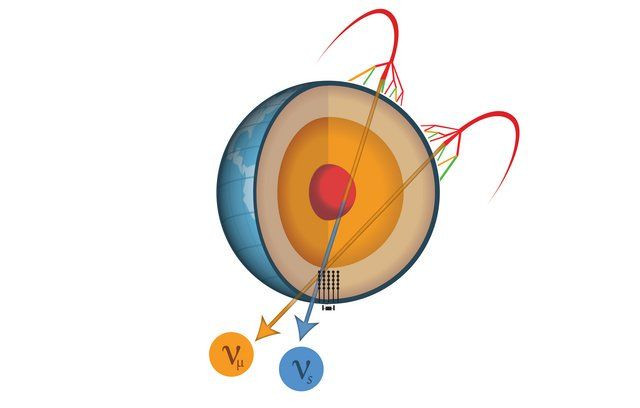What Is A Sterile Neutrino? Antarctica’s IceCube Observatory’s Search For 4th Particle Explained

There is a hypothetical particle in the scientific world that lives in the theories of scientists but has not yet been proven: the sterile neutrino.
To understand what a sterile neutrino is, it is crucial to understand neutrinos. Essentially, they are nearly-massless subatomic particles that interact with matter and are constantly streaming through us. Scientists know of three types — muon, electron and tau — and theorize that there is a fourth, which they call sterile neutrino. This particle, in comparison to the three known types, would not interact with matter except (maybe) through gravity.
The idea of a fourth neutrino came in 1995 from physicists at the Los Alamos National Laboratory. While working on the Liquid Scintillator Neutrino Detector to investigate the three types of neutrinos, the scientists stumbled upon evidence suggesting there could be a fourth. Since then, scientists have been working to get hard proof that the sterile neutrino exists. Part of the challenge is the fact that the only way to detect a sterile neutrino is to capture it while it is transforming into one of the other three types of neutrinos.
Published today in PRL, IceCube search for the ‘sterile neutrino’ draws a blank https://t.co/5fPbQVxkk7 @APSphysics pic.twitter.com/0q1Zspmq2e
— IceCube Neutrino Observatory (@uw_icecube) August 8, 2016
If found, the significance of proving the sterile neutrino is huge. Not only would it give scientists a better understanding of particle physics, but it could potentially explain why neutrinos have mass, uncover the origin of dark matter and whether neutrinos are a factor and shed light into the asymmetry of matter and antimatter in the universe. It would also debunk the Standard Model of particle physics — a theory that only permits for three types of neutrinos.
"If you throw in a fourth neutrino, it changes everything," said Francis Halzen, a University of Wisconsin-Madison professor of physics, in a statement. "Sterile means it doesn't interact with matter itself, although it can dramatically interfere with the way conventional neutrinos do."
In 2014, astrophysicists from Universiteit Leiden and Harvard University independently found an anomaly that would suggest sterile neutrinos are real. But, according to a new study published in the journal Physical Review Letters, the odds of sterile neutrinos existing are low. The researchers conducted two analyses from the IceCube Neutrino Observatory — a massive detector making up a cubic kilometer of ice that has been “designed to observe the cosmos from deep within the South Pole ice” — and concluded with 99 percent certainty that sterile neutrinos do not exist.
“Atmospheric neutrinos could oscillate into sterile neutrinos when they travel through a dense area of matter, like the Earth's core,” wrote the authors. “However, sterile neutrinos cannot be detected by IceCube. Thus, if sterile neutrinos exist, IceCube would measure a disappearance of atmospheric neutrinos that would otherwise reach the detector on a trajectory through the Earth's core.”
© Copyright IBTimes 2024. All rights reserved.





















